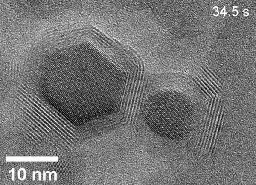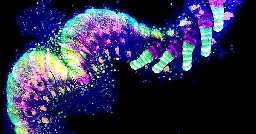Microscopy
- 1,000,000x Magnification with Atomic Force Microscope (a video about how AFM works, with a macro-scale analogy demonstration)invidious.reallyaweso.me 1,000,000x Magnification with Atomic Force Microscope
Today we're looking at Atomic Force Microscopy! I built a "macro-AFM" to demonstrate the principles of an atomic force microscope, then we look at a real AFM (an nGauge AFM from ICSPI) and do a few scans in the shop to see how it works. CONSIDER SUBSCRIBING 🥰 ☕Buy me a coffee? https://www.buymeaco...
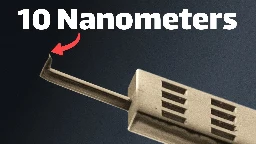
- Tiny beauty: how I make scientific art from behind the microscopewww.nature.com Tiny beauty: how I make scientific art from behind the microscope
Steve Gschmeissner images tiny creatures and viruses to show the public an unseen world.

- Fluorescent protein outshines the competition when imaging cellsphys.org Fluorescent protein outshines the competition when imaging cells
Delicate cellular structures and dynamic processes within cells that were hitherto unseen could be revealed by the next generation of a green fluorescent protein developed by chemists at RIKEN.
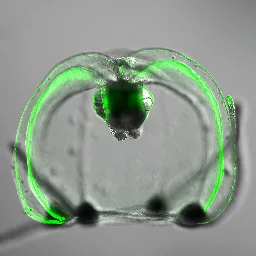
- Chemists, engineers craft adjustable arrays of microscopic lensesphys.org Chemists, engineers craft adjustable arrays of microscopic lenses
They number in the thousands, light striking the phalanx of lenses arrayed on a face in geometric pattern, the beams refracting through transparent mounds no wider than a hair.

- How open-source software could finally get the world’s microscopes speaking the same languagewww.nature.com How open-source software could finally get the world’s microscopes speaking the same language
A plethora of standards mean shareable and verifiable microscopy data often get lost in translation. Biologists are working on a solution.

- Giant Cell Swallows an Animal Alive

YouTube Video
Click to view this content.
A video of a "giant" single-celled organism eating a rotifer!
- Self-healing observed at nanoscale in platinum foil under strainwww.nature.com Autonomous healing of fatigue cracks via cold welding | Nature
Fatigue in metals involves gradual failure through incremental propagation of cracks under repetitive mechanical load. In structural applications, fatigue accounts for up to 90% of in-service failure1,2. Prevention of fatigue relies on implementation of large safety factors and inefficient over...
- Developing human embryos imaged at highest-ever resolutionwww.nature.com Developing human embryos imaged at highest-ever resolution
Non-invasive imaging approach could lead to innovations in embryo screening.
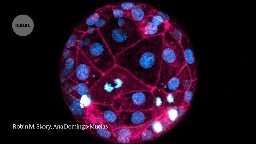
Breakthrough here is the ability to image embryos comprised of living cells as opposed to post-mortem embryos.
original doi: https://doi.org/10.1016/j.cell.2023.06.003
- OpenFlexure: A 3D Printable Microscopeopenflexure.org OpenFlexure Microscope
The OpenFlexure project aims to make high precision mechanical positioning available to anyone with a 3D printer - for use in microscopes, micromanipulators, and more.
I've gotten all the parts printed and collected but haven't set it up yet. Excited to see how well it does.
- Pollen Series #1: Urtica diocia - Stinging Nettle

>Tender-handed, stroke a nettle, > >And it stings you for your pains. > >Grasp it like a man of mettle, > >And it soft as silk remains.
This little guy is Urtica diocia, better known as Stinging Nettle.
It is found all over the world in mild and temperate climates and has a long history of use as a source of traditional medicine, food, tea, and textile raw materials. It's an old treatment for arthritis as its' stings increase blood flow.
In England, it was once thought that the Romans were the first to import the plant. Nettle fibre evidence from a cist on Dartmoor, however, suggests that the plant was collected locally as far back as the Bronze Age.
https://archaeology.co.uk/articles/features/cist-whitehorse-hill.htm
In palaeoecology, it is used as a disturbance indicator, such as on sites of abandoned habitation/construction, within communities of cultivated ground, and on areas enriched with cattle and sheep dung.
Nettles are generally considered to be weeds due to their rapid growth but offer great benefits in rejuvenating over-fertilized soils and increasing local biodiversity.
Personally, I like it in a nice tea. It is surprisingly good. 🍵
Wiki upload: https://commons.wikimedia.org/wiki/File:Urtica_dioica_(Stinging_Nettle)_pollen.tif
I uploaded this a while ago with my beaten up Brunell hobbiest microscope and have since gotten much better ones. Going to resurect this series at some point but here's one for now.
- Microscopy techniques combine to create more powerful imaging devicephys.org Microscopy techniques combine to create more powerful imaging device
If you imagine yourself peering through a microscope, you probably picture looking at a glass slide with an amoeba, or maybe a human cell, or perhaps even a small insect of some kind.
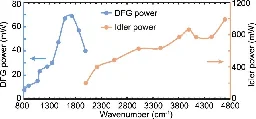
- How Do Nanoparticles Grow? Berkeley Lab Scientists Capture Nanoparticles Combining under High-Resolution TEM
Using a technique called high-resolution liquid cell transmission electron microscopy (LC-TEM) at the Molecular Foundry, the researchers captured real-time, atomic-scale LC-TEM videos of Cd-CdCl2 CSNPs ripening in solution.
- In Operando TEM of All-Solid-State Garnet-Based Lithium Batteries
Fully solid-state lithium batteries offer some key advantages over the current liquid electrolyte based systems. But these solid electrolytes under development can be unreliable and their degradation mechanisms are unclear. This investigation employed transmission electron microscopy (TEM) to study the evolution of these materials while they operate. They found that differences between the expansion of the cathode material and solid electrolyte induced delamination at their interface. They also noted microscopic cracks forming in the cathode material, and reduction of LCO to metallic Co when the potential was allowed to drop below 1.5 V vs Li/Li+.
- Neuroscientists investigate neuronal communication with ultra-thin fiber-based endo-microscopemedicalxpress.com Neuroscientists investigate neuronal communication with ultra-thin fiber-based endo-microscope
In order to investigate the activity of neuronal structures as well as the interaction of nerve cells, minimally invasive technologies providing images from delicate deep-brain tissues are required. A new hair-thin endo-microscope, developed by an international team with the participation of Leibniz...

This summarizes a paper in which researchers created a microscope probe using a single, 110 µm diameter optical fiber. An interesting technique from this that I had not seen before, was that the end of the optical fiber is angled and coated with aluminum to create a mirror looking perpendicular to the length of the fiber. This enables researchers to image living cells less intrusively.
doi: https://dx.doi.org/10.1038/s41467-023-36889-z
- Tarantula embryo gene expression
Tarantula (Acanthoscurria geniculata) embryo showing expression of genes that pattern the legs and body wall. Right side has curved abdomen, 4 walking legs, and 1 pedipalp (head accidentally removed). Left side has curved abdomen and 1 walking leg (the rest accidentally removed).
The pink/white stripes are where the gene "odd-skipped" is expressed, which marks where the leg joints will form.
- Trying to upload cool confocal microscopy image, but I keep getting an error message
Error message is SyntaxError: Unexpected token 'R', "Request er"... is not valid JSON
Are image uploads not allowed here? Only URLs? Thanks! Hoping this community grows and flourishes! :)
- Leaf Stomatas with Nail Polish and Cheap Classroom Microscopes

The school year just ended but I wanted to show off what my class was able to accomplish with some cheap high school microscopes. The images below are under-leaf impressions of diocot and monocot plants which show the stomata used to control water evaporation. To avoid the preparation of slicing leaves themselves we painted a thin layer of nail polish on the underside. Peeling this dry layer off results in a mold of the leaf itself which can then be attached to a blank slide with cellophane tape.
- PIC16C66 under the microscope

I have to admit, not my most successful attempt at the "apply violence until the die is visible" method of decapping ever. The silver stuff to the right is the broken off silicon.
- Rotifer under the microscopepeertube.uno Rotifer under the microscope
A rotifer hunting and exploring, 400X. Found a lot of rotifers living in the water of my lotus flower (Nelumbo nucifera), and decided to record one. Music: Trail by Nobara Hayakawa Distributed unde...
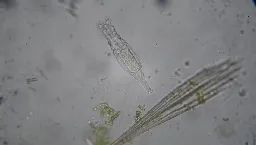
I put a drop of liquid from my lotus flower's vase under the microscope and noticed a lot of bdelloid rotifers, so I decided to record one at 400x magnification.
I also used this opportunity to upload a video to a PeerTube instance. It is actually a bit of work to find an appropriate instance willing to register new users, as many of them accept a narrow range of topics and 'microscopy videos' is usually not one of them.
